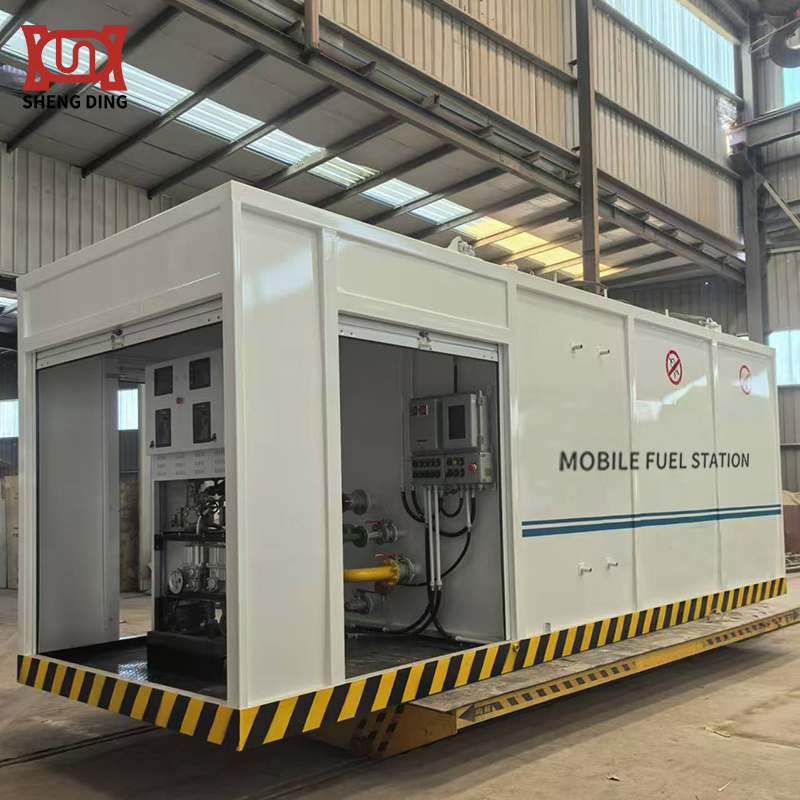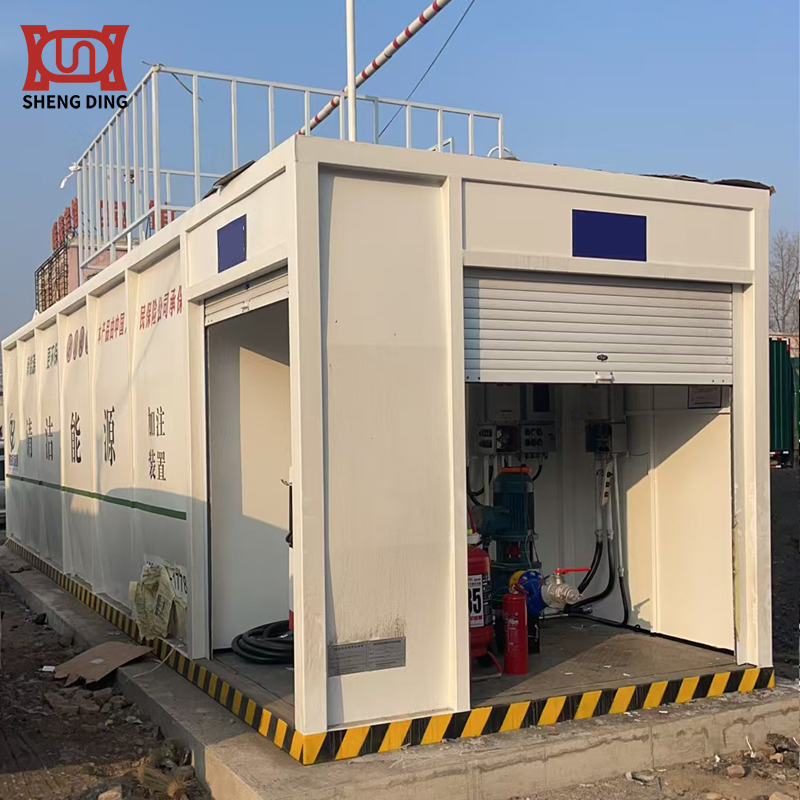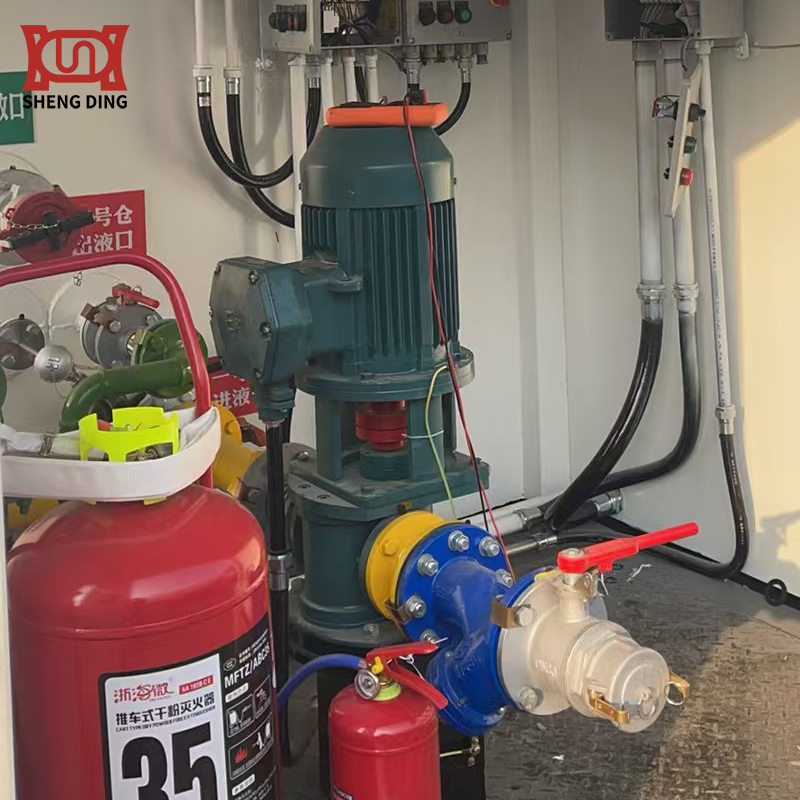Six benefits of regular cleaning of double-layer oil tanks in skid-mounted gas stations
1. Prevent oil mixing or container contamination and deterioration at skid-mounted gas stations: Oils of different properties cannot be mixed, otherwise the quality of the oil will decline, and in serious cases, the oil will deteriorate. In particular, various mid-to-high-end lubricants contain a variety of additives with special functions. When oils with different system additives are mixed, it will affect its performance and even cause the additives to precipitate and deteriorate. Mixing light oil into lubricating oil will reduce the flash point and viscosity; mixing food machinery grease into other lubricating greases will cause food contamination; mixing motor gasoline into solvent oil will increase toxicity. Therefore, in order to prevent various oil products from mixing or contamination, the following measures should be taken:
In order to prevent the bulk oil products of skid-mounted gas stations from being contaminated during the unloading, transfer, filling, and shipment processes, the pipelines and oil pumps should be divided into groups according to the different properties of the oil products. Oil products of different properties should not be mixed. If they must be mixed, the remaining oil in the pipeline should be cleaned. The remaining oil should be extracted with a vacuum pump at the lowest position of the pipeline or cleaned with filtered compressed air. Steam cleaning can also be used if conditions permit. Then rinse with the oil product to be transported for a few minutes, release the oil head, and use it after inspection and confirmation of cleanliness.

When oil drums, double-layer tank trucks, double-layer tanks, oil tankers and other containers are modified with other oil products, they should be brushed and dried. Filling with the same type of oil as the original residual oil in the container, the container can be repeated only if it meets the requirements to ensure the quality of the oil product. When filling medium and high-grade lubricating oil with used oil drums, double-layer tanks, double-layer tank trucks, and oil tankers, they must be specially brushed, that is, brushed with solvents or suitable gasoline, and purged with steam when necessary. They must be free of impurities, moisture, oil stains and fibers, and have no obvious rust, rust scale, rust residue and black oil stains before they can be loaded.
2. Keep the inside of the double-layer tank of the skid-mounted gas station clean to reduce oil pollution:
Metal and rust can induce oil oxidation and deterioration. Applying an anti-rust layer on the inner wall of the double-layer tank can better avoid the catalytic effect of metal on oil oxidation. There are a large number of impurities such as minerals, sludge, paraffin, and bacteria in crude oil. These fine rust and impurities adhere to the bottom and inner wall of the storage double-layer tank over time and cannot be cleaned, which will cause blockage, corrosion, and leakage of the double-layer tank. The residue at the bottom of the gasoline tank is mainly rust. When the double-layer tank is unloaded, the sediment at the bottom of the tank will appear, and the powdered rust will dissolve into the oil. Adding such oil will cause great harm to the vehicle itself. Regular cleaning of the tank and coating the inner wall with anti-corrosion coating are effective measures to solve metal oxidation and rust and slow down the deterioration of oil.
3. Regularly check the bottom of the double-layer tank at the skid-mounted gas station and ensure safe cleaning:
The longer the oil is stored, the more sediment will be produced by oxidation, and the more serious the impact on the quality of the oil. Therefore, the bottom of the tank must be checked once a year to determine whether it needs to be cleaned. The cleaning cycle of various double-layer tanks is required to be: light oil and lubricating oil tanks are cleaned once every 3 years; heavy diesel tanks are cleaned once every 2.5 years. At the same time, once the metal of the double-layer tank is corroded and perforated, a large amount of oil will leak, causing economic waste and environmental damage, and even causing fire. Therefore, the bottom of the tank must be checked once a year to determine whether it needs to be cleaned. The cleaning cycle of various double-layer tanks is: crude oil is cleaned once every five to eight years; light oil and lubricating oil storage tanks are cleaned once every three years; heavy diesel storage tanks are cleaned once every two years.
4. The oxidation, colloid and corrosion caused by water pollution to oil products are serious:
Most of the water in oil products is mixed in during transportation, loading and unloading, and storage. The long-term storage of oil products will also precipitate the water dissolved in the oil products. Long-term accumulation will cause an acidic water layer to appear at the bottom of the storage tank. The water mixed in the oil products can corrode the parts; the presence of water will cause some additives such as detergents, dispersants, antioxidants, and anti-explosion agents to decompose and precipitate, making them ineffective; when there is water, the oxidation rate of oil products is accelerated, and the amount of colloids is also increased. In addition, the acidic water layer deposited at the bottom of the tank will accelerate the corrosion of the storage tank, causing the tank wall to thin or even leak.


5. Protect skid-mounted gas station equipment and extend service life:
It can remove rust and prevent rust, avoid equipment corrosion damage, especially after preventive treatment, the service life of the equipment is extended, and the corrosion rate can be reduced by 90% after the addition of corrosion inhibitors.
6. Reduce accidents at skid-mounted gas stations and improve refrigeration effects: It can sterilize and kill algae, remove sludge, make pipelines unobstructed and oil clear, prevent scaling, and improve the heat exchange efficiency of condensers and evaporators, thereby avoiding high-pressure operation and overpressure shutdown, improving oil quality, and making the system run safely and efficiently.
Container equipment such as oil tanks and skid-mounted gas stations are not precision equipment, but they have very strict requirements on volume error. However, in normal production, it is inevitable that errors will occur. In fact, once such defective products appear, it is mainly caused by some careless links in production. Today we will analyze the causes of inaccurate volume calculations of some double-layer oil tanks and skid-mounted gas stations.
Written by
TAIAN SHENGDING METAL CONTAINER MANUFACTURING CO., LTD.
Editor Wang
www.self-bunded-tank.com
WhatsApp : +86 152 5486 3111
Email :shengdingtank@126.com
- WhatsApp
- E-MailE-Mail:shengdingtank@126.com
- WeChatWeChat:15254863111









